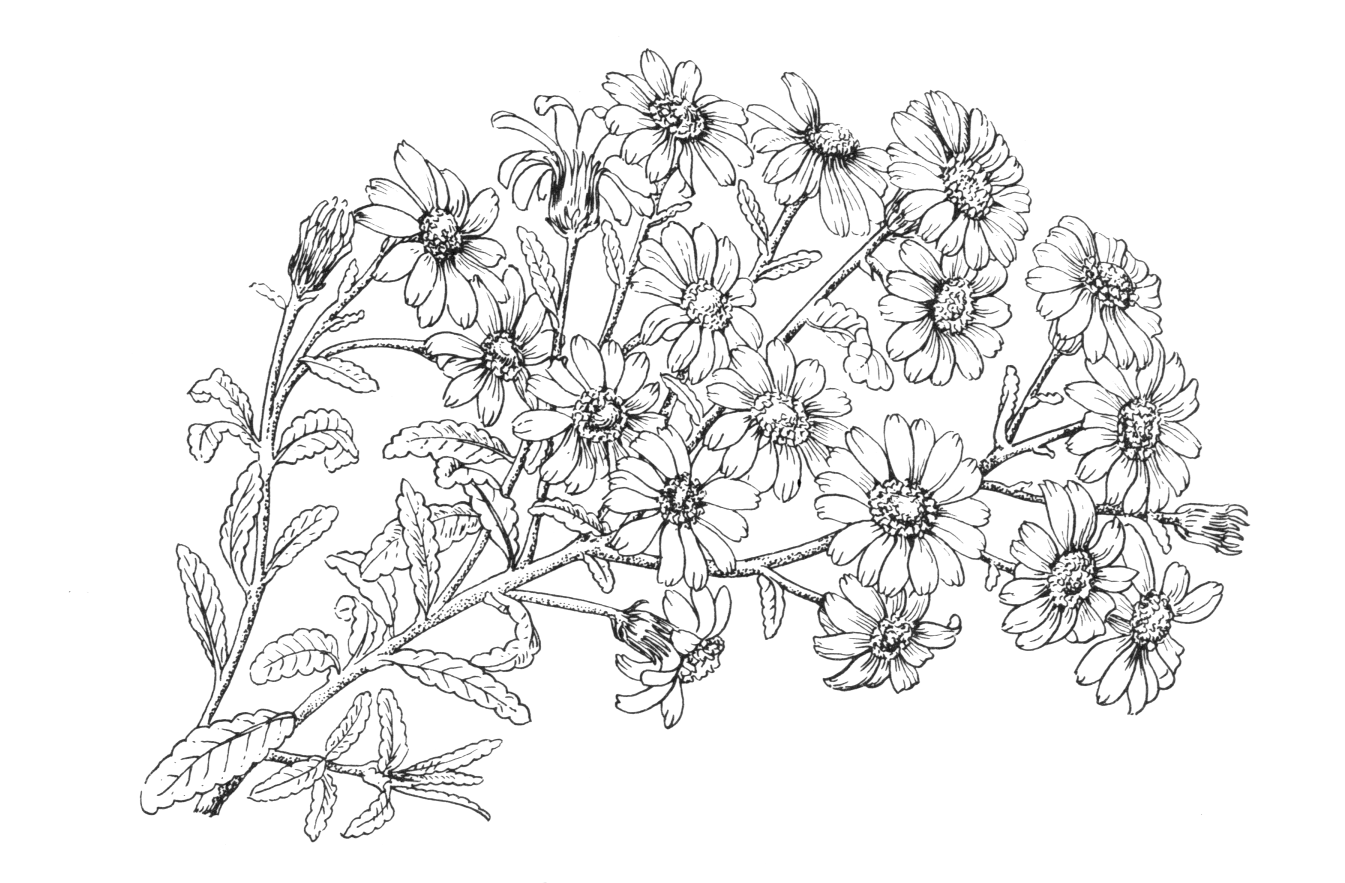Senecio monroi
Credits
Article from Bean's Trees and Shrubs Hardy in the British Isles
Recommended citation
'Senecio monroi' from the website Trees and Shrubs Online (treesandshrubsonline.
Genus
Synonyms
- Brachyglottis monroi (Hook. f.) B. Nord.
An evergreen, much branched shrub up to 4 ft high; young shoots, leaf-stalks, under-surface of leaves and flower-stalks all covered with a whitish felt. Leaves oblong, oval, or rather obovate, conspicuously wrinkled or wavy at the margin, rounded at the apex, tapered at the base; 3⁄4 to 2 in. long, 1⁄4 to 5⁄8 in. wide, dull green, sticky and glabrous above; stalk 1⁄4 to 3⁄8 in. long. Flower-heads in terminal compound corymbs, each section carrying three to five; the flower-head is 1⁄2 to 3⁄4 in. wide, carrying ten to fifteen bright yellow ray-florets; flower-stalks long and slender, glandular-downy and sometimes also white-felted; involucral-scales glandular-downy, sometimes also white-felted. Bot. Mag., t. 8698.
Native of the South Island of New Zealand, up to elevations of from 1,000 to 4,500 ft. The species is distinct in its wrinkled leaf-margins and glandular-downy flower-stalks, its nearest ally being S. compactus which has whitish, felted, but not glandular flower-stalks and usually only faintly wrinkled leaves. It is a handsome shrub whose inflorences may be 4 to 6 in. wide and are borne in July. No one succeeded better with it than the late Canon Boscawen at Ludgvan Rectory, near Penzance, or Lord Wakehurst in Sussex, who had a plant 41⁄2 ft high and 9 ft in diameter. At Kew it just misses being hardy in a sheltered nook, but survives our milder winters.

